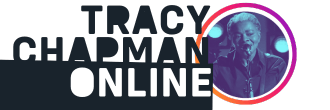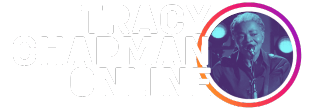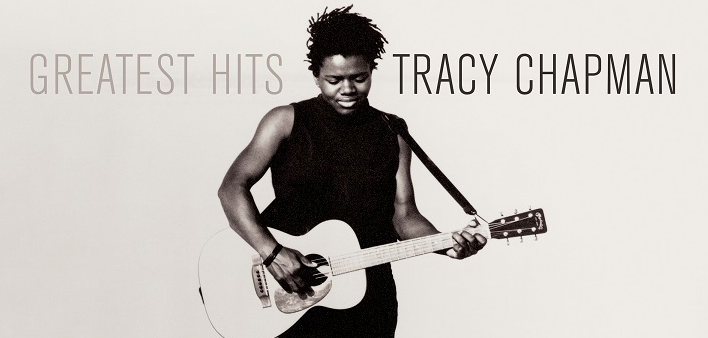The eighteen tracks that comprise Tracy Chapman’s Greatest Hits (Elektra/Rhino) are not only her best-known songs: they are the evidence and artefacts of an extraordinary odyssey, one that took her from busking on the streets of Boston to headlining stages around the world. In personally selecting and sequencing tracks from each of her eight best-selling studio albums, Chapman has created a compellingly fresh narrative through her songs. She intertwines accounts of characters battling the odds to escape troubled circumstances with more intimate tales of romance longed for and sometimes found, along with forthright calls for social justice and equality. Greatest Hits reaffirms Chapman’s gifts as an evocative composer and as a storyteller of exceptional insight and candor, an artist with a remarkable empathy for the protagonists she has created. And though she released her first album 27 years ago, all of these songs feel timely, honest, real – often as painfully to-the-point as today’s headlines.
To produce and re-master this set, Chapman called upon David Kershenbaum, the producer of her 1988 debut, Tracy Chapman, an album that went on to sell more than 20 million copies worldwide and garner Chapman three Grammy Awards. Explains Chapman, “When I was choosing the songs, I decided that I would make the selections based on the songs that have been most requested by my fans over the years, in concert or on the radio. All of them stand on their own, each record I made has its own sonic quality, but by choosing to re-master them, we were able to make everything cohere for this compilation. In addition to focusing on the dynamics of the sequence over all, I looked at tempos and keys as well as the subject matter. We wanted to make them sound like they all belonged together.”
‘Telling Stories’ had to lead off the collection: “I chose to have it begin the record in part because it explains what I do. It starts a journey.” And ‘Stand By Me’, a cover of the Ben E. King classic, recorded live at The Late Show With David Letterman, featuring just Chapman’s electric guitar playing and voice, had to end it. Earlier this year Letterman himself had asked Chapman to appear on his show as he was finishing his legendary run and he had specifically requested that tune: “I didn’t know why he wanted that particular song, so, when he introduced my performance, it was lovely to hear that it was a song he would sing to his son before he put him to sleep at night. That was one of those unexpected but truly special highlight moments for me.” Placing it at the close of the album was partially a practical concern, since it contains the sound of the studio audience cheering at the end of Chapman’s performance. But it signifies more than that: “After all these years, I feel that my fans have stood by me, and I hope that they feel I have done right by them by trying to make good music.”
When the world first heard Chapman in 1988, she seemed to be a stunning overnight success: a young folk singer catapulted from singing in Harvard Square and playing Cambridge coffee houses to the cover of Rolling Stone. She bucked synth-heavy late-eighties musical trends with her lyrically direct, emotionally affecting and – above all – utterly human sound. Kershenbaum became her protector as well as producer, ensuring that Chapman’s striking voice and acoustic guitar were always front and center once she got into the studio. Chapman’s rise was indeed rapid, her discovery in Boston by a music publisher’s son serendipitous. But her stardom was more about determination than luck. It was the result of a passion and dedication to music that began when she was quite young. As a child growing up in Cleveland, Ohio, she pestered her mother to buy her a guitar.
“I started writing songs when I was eight years old,” Chapman recalls. “I had asked my mother for a guitar as a birthday present, a Christmas present, something like that. We didn’t have much money; we grew up working class. After my parents divorced, my mother raised my sister and me on her own. It was a big request to make, but somehow she managed, and she realized how important it was to me.” Chapman laughs, “Maybe I just kept harassing her, I’m not sure. So I got my first guitar, a three-quarter body. It wasn’t fancy, made out of plywood, and it was a challenge to play. I didn’t know much about guitars. The action was really high; the strings were far from the frets. So when I first started teaching myself, my fingers would bleed. But I really loved it and I stuck with it.”
When that first guitar got damaged, her older sister, without asking, decided to replace it with money she’d earned at a part time job: “She has always been the biggest supporter of my music. She wanted to help me out, to encourage me.” Clearly Chapman’s gifts as an artist were already manifest and people noticed. She was offered a full scholarship as a boarding student to the prestigious Wooster School in Danbury Ct. There, she says, “I met other people who were playing acoustic guitars and even writing their own songs. We would all play together and I would play music at chapel services.” The chaplain at the school, also a guitarist, admired Chapman’s playing and offered to loan her one of his instruments, but he also urged her to get a better guitar of her own.
“I said that would be great,” remembers Chapman, “but I don’t have the money for another guitar. Then one day – I had no idea it was coming – the chaplain presented me with a check. It was money he’d collected from the staff and the teachers at the school so I could buy a full-size guitar, a real guitar, you might say. So I took that money and a little bit of money I had from my mother and went to New York City with a friend, to 48th Street, and bought my first big guitar, a Fender acoustic. That’s the guitar I used on the first record. It was just lovely to have that kind of support from the very beginning, from all these people.”
Chapman’s debut album was released in April 1988. Two months later she found herself in front of an audience of 72,000 people at London’s Wembley Stadium, invited to sing at an historic anti-apartheid event marking the 70th birthday of Nelson Mandela, then still incarcerated. Chapman, alone on stage with her guitar, was enthusiastically received by the live audience and by millions of television viewers around the world. As she recounts, “Stevie Wonder was scheduled to go on but a piece of his equipment was missing. I was in the green room and they said, ‘You’re on’. We literally had to run to the stage to get there, dragging my guitar cord behind me. And I was thrust onto the stage. That was helpful in a way, going out there without thinking about what I was about to face, a sea of people, the largest audience I’d ever seen in my life. I didn’t know what I expected but it couldn’t have been any better because there were all these people who didn’t know me and they listened.”
And they have continued to listen. Following that appearance, Tracy Chapman rapidly ascended the charts. Since then, she has amassed an impressive body of work, building upon the eloquent storytelling of her debut. She received a fourth Grammy Award in 1995 for ‘Give Me One Reason’ and was honored with an American Music Award, two Brits, and a Billboard Music Award, among other accolades. Fellow artists like Neil Young, Flea, Bobby Womack and Vernon Reid have joined her in the studio, along with a stellar line-up of studio musicians, including the bassist Larry Klein, percussionist Ms. Bobbye Hall and E Street Band keyboardist Roy Bittan. She collaborated with photographer Herb Ritts on photo sessions and a music video shoot, and selected one of his elegant black-and-white images for the Greatest Hits cover. It’s a tribute to the late photographer, who’d become a friend and confidante as well as a collaborator. Says Chapman, “He was one of the most talented photographers and he was a lovely man. He always put me at ease. I never liked having my photograph taken but I always felt comfortable around him. That was an easy choice for the cover. I wanted to honor his artistry and his memory and I loved that photo.”
Within its proverbial grooves, Greatest Hits collects memories and milestones, a history that Chapman and her fans can share. Her songs have moved and galvanized listeners for nearly three decades. And her life story has been just as inspiring.
“I have people approach me fairly often actually who will say I saw you perform in Harvard Square,” Chapman reveals. “It’s something to be reminded of – that I had no idea where things would go, what course my life or my career would take. But I’m very happy where things stand right now. I feel fortunate to have had these opportunities over the years to work with these wonderful musicians and producers and to make some good friends and hopefully, like I said before, make good music in the process.”
– Michael Hill (11/15)


